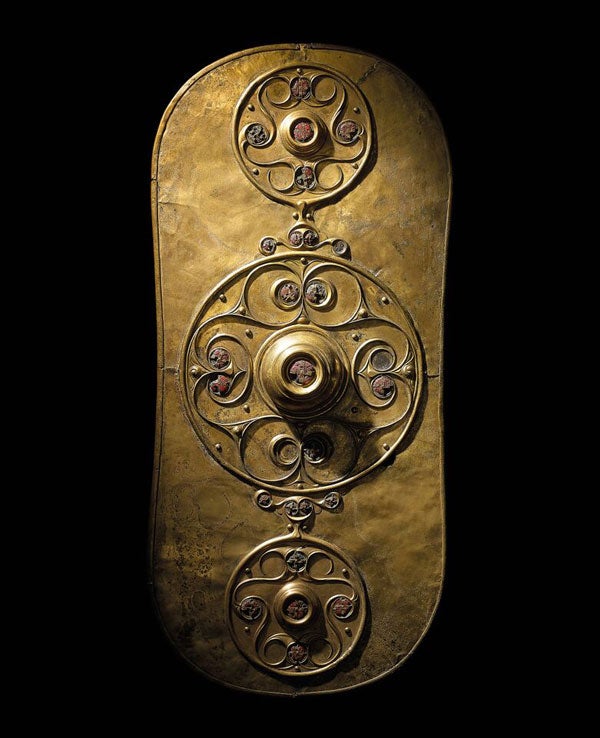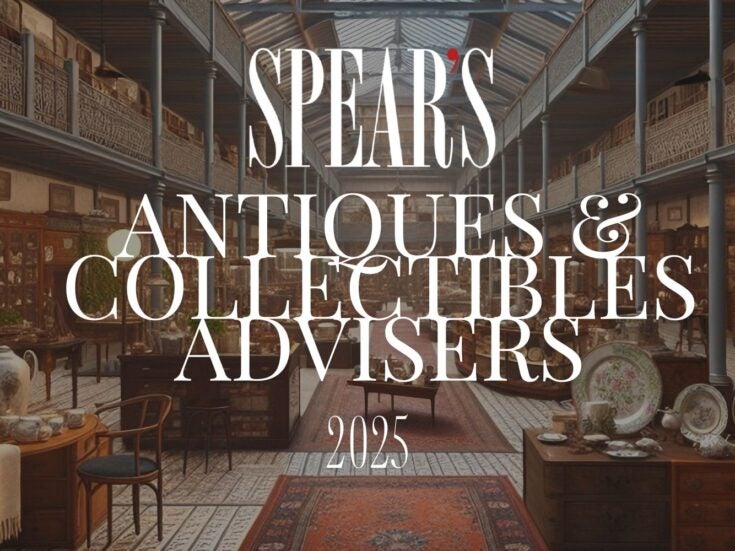

Above: Gundestrup Cauldron (detail). Silver. Gundestrup, northern Denmark, 100 BC-AD 1. © The National Museum of Denmark.
The Celts, inhabitants of the peripheral mountains and islands of Europe, have become synonymous with the outer, the remote and the Romantic. Apt then to see the image of the Isle of Staffa’s Fingal’s Cave and a reference to the bohemian overture it inspired at the British Museum’s Celts: Art & Identity.
The roar and crash of the North Atlantic on Staffa’s basalt columns is not quite the same as Mendelssohn’s rolling strings but it is an important metaphor for the power of hard reality to inspire Romantic visions – and we can be thankful that this exhibition reveals the unseen force of the waves of Celtic culture hitting a harder history and the dialogue that resulted.
The exhibition opens by making clear its case for articulated ‘difference’. Celts, who were found everywhere from Scotland and Ireland to Portugal to Romania and were at the peak of their power before the rise of Rome, live outside of empires and states. They are not English and they are not French, they are the quintessential exterior that came to give Rome the barbarian narrative, classicists their civilised departure point.
But this is culture no less tangible than the Roman. An intricately carved and beautiful Scottish hornbeam harp sits in the first room. It is stringless but deafening in its silence – instrumental to a new Celtic narrative. That narrative returns full force towards the close of the exhibition but the body proper establishes a civilisation in its own right, the objects representing industrious and artistic peoples whose repetitive montages of war and feasting made them no less talented in rendering their experience in bronze and wood.

Basse-Yutz flagons, Lorraine, France, 400-360 BC, © The Trustees of the British Museum
And the bronze and wood on display here are unsurpassed in their artistic inspiration. The Celts exquisitely rendered in the craftsmanship and metalwork on display in the flagons, bowls, helmets, swords and shields here their own warring and feasting parallels that gave their culture the qualifying contours of the time. It is difficult to think of anything surpassing these skills in classical or even Renaissance Europe. As with every imperial narrative, the early historians’ criticism of the ‘barbaric’ Celts was really a form of self-absolution.
The contrast of identities is shown by the display of two snake bracelets: one, Roman, a gold serpentine likeness from Pompeii, the other, Celtic, an imagined character of over-formed, twisted metal, alive and fecund with Caledonian stories.

Image of a warrior Braganza collection, Iberia 250-200 BC, © The Trustees of the British Museum
The absence of a Celtic written language means truth never gets in the way of a good story. One of the most beautiful items is a pin from third century BC Iberia. A warrior is shown gesturing towards an unspecified beast – a pet? An adversary? We don’t know. The curation suggests he is ‘on his adventures’; one hopes all good Celts got to go out on their adventures.
And so the Romantic view builds, creeping in as a modern coping strategy. This is the world of the village and hill fort, communities with a warrior’s view of a world, dependent on the chance and luck of battle. This is not the polis that could define, debate and rationalise the world and afford accepted truths. One is given the sense that Celts depended on interpretation and abstraction to established imagined, lucid truths, but truths just the same.
Everywhere is decorated and interested; swirling patterns adorn the back and the front of shields, while deer, horses, dogs, birds and companies of mythical creatures cling to drinking vessels, the most impressive being the Gundestrup Cauldron: an iron age zoetrope of dazzlingly animated creatures and gods. Allegedly it was made in Romania or Bulgaria although it was found in Denmark. It shows how active the Celts were, how their trade routes gave a need for skills, dialogues and mercenary missions that took their warriors, their culture and their stories all over Europe.

The Snettisham Great Torc. Snettisham, Norfolk 100-50 BC. © The Trustees of the British Museum
It’s a historical melting pot, something this exhibition credits in its presentation of the Roman invasion. Although under the first of successive yokes the Celtic culture perseveres, the art is reinterred only to find new voices, first blending Mars and Celtic god Toutatis, then building monotheist monuments with the signature Celtic cross (originally made for structural integrity).
In achieving this the Celtic culture becomes a heritage, showing that, while the Roman impact may have been fatal for many, the absence of written language and rigid civil organisation not only made this blending possible but fertile. When Gerald of Wales describes the St Chad Gospels as ‘work not of men, but of angels’, he is writing about Celtic art and identity.
The Romans won history because they could write but Celts won our wonder by slipping historical moorings: the Holzgerlingen statue of a double-faced warrior ‘may represent a god whose name and stories are lost’. It is that potent, double-edged thing, a canvas for history.

‘Poster for the Glasgow Institute of Fine Arts’ by Herbert McNair, Margaret and Frances Macdonald. c.1894. © The Hunterian, University of Glasgow.
That canvas becomes a palimpsest as the exhibition closes. Like sea-fog over the Western Isles the myths roll in; in this case the majority are chronicled by those nearer an English centre. The exhibition displays these publications well, making the history and identity as much about the storytellers as the story. The ‘English colonist’ John White writes on a painted Pictish woman (1590): ‘The low parts and thighs [painted] with lion-faces or other beasts as yet come best into their fancy.’ Like the Romans before there is no small sense of self-absolution.
With the post-industrial Celtic revival, art becomes a vehicle for identity rather than part of the same art and identity alloy. Whereas the Iron Age Celts sought to inter a world view in their art, the Celtic revivalists sought to find an external self in their art. From Macpherson’s invented ‘The Works of Ossian’ (1765), Mendelssohn’s Hebredian Overture (1832) and up to the Glasgow Institute of Fine Art’s 1895 festival poster and a ‘Celtic’ Art Nouveau tea set, there is a distinct sense of very modern invention here (although sadly John Martin’s epic ‘The Bard’ is absent).

Above: ‘The Druids: Bringing in the Mistletoe’ by George Henry and Edward Atkinson Hornel. 1890, oil on canvas. © CSG CIC Glasgow Museums Collection.
Fittingly a low wall separates the real Celts from their re-imaginings, a warrior’s dented bronze shield from Henry and Atkinson Hornel’s pre-Raphaelite ‘Druids Bringing in the Mistletoe’. There is even a small gap in the wall that allows you to glimpse both rooms, a gap through which the waves of rebirth slap against the basalt of historical evidence.

The Battersea Shield. 350-50 BC. © The Trustees of the British Museum
That makes difficult echoes. Unsurprisingly there is reference to the political attributes of Celtic culture and the agendas that have arisen from identities utilising art to differentiate themselves. Intriguingly both the Loyalists and the Nationalists of Northern Ireland celebrate the hero Cúchulainn and his defiance of invaders.
What this exhibition gives the visitor is a strong and very real sense of both art and identity and how they complement each other. Crucially it does not deny the Romantic lens which so much of Celtic culture is refracted through, showing that while it is important to our modern day interpretations, it is constructed on a more tangible historic foundation. Any Celt, then and now, would pick the ornate gold treads of the torcs on display here and draw identity.
Although you can’t hear Mendelssohn’s overture hear you can hear the bestial roar of the boar-headed carnyx war horns; it is a sound much closer to the crash of Atlantic swells. This exhibition shows that for all the Romantic laurels, Celtic art, culture and civilisation have deep and real roots rendered in bronze, iron and gold, truths complemented, not undone, by our imaginings.
Celts: Art & Identity is on at the British Musuem until 31 January 2016






